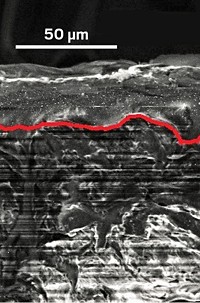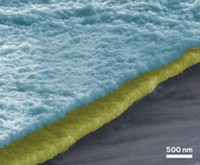Advertisement
Grab your lab coat. Let's get started
Welcome!
Welcome!
Create an account below to get 6 C&EN articles per month, receive newsletters and more - all free.
It seems this is your first time logging in online. Please enter the following information to continue.
As an ACS member you automatically get access to this site. All we need is few more details to create your reading experience.
Not you? Sign in with a different account.
Not you? Sign in with a different account.
ERROR 1
ERROR 1
ERROR 2
ERROR 2
ERROR 2
ERROR 2
ERROR 2
Password and Confirm password must match.
If you have an ACS member number, please enter it here so we can link this account to your membership. (optional)
ERROR 2
ACS values your privacy. By submitting your information, you are gaining access to C&EN and subscribing to our weekly newsletter. We use the information you provide to make your reading experience better, and we will never sell your data to third party members.
Materials
Sodium-Ion Cell Goes Solid State
Crystallized glass electrolyte could make sodium-ion batteries practical
by Jyllian Kemsley
May 28, 2012
| A version of this story appeared in
Volume 90, Issue 22
A solid-state electrolyte made from a sodium orthothiophosphate (Na3PS4) glass can power a sodium-ion battery at room temperature, report researchers from Osaka Prefecture University, in Japan (Nat. Commun., DOI: 10.1038/ncomms1843). Sodium-ion batteries hold promise as a less expensive alternative to lithium-ion batteries, but right now the technology requires high operating temperatures and involves a liquid electrolyte that may leak. Akitoshi Hayashi and colleagues envision a solid-state sodium-ion battery that works at ambient temperatures. His group prepared the electrolyte by heating a Na3PS4 glass to 270 ºC, then precipitating out a crystallized glass, or glass-ceramic. A solid-state cell made from the electrolyte with sodium-tin alloy and titanium disulfide electrodes worked through 10 charge cycles at room temperature. Although the cell’s capacity was only 40% of the theoretical capacity, the researchers are working to improve its performance by developing new electrode materials and modifying the structure of the electrolyte.





Join the conversation
Contact the reporter
Submit a Letter to the Editor for publication
Engage with us on Twitter